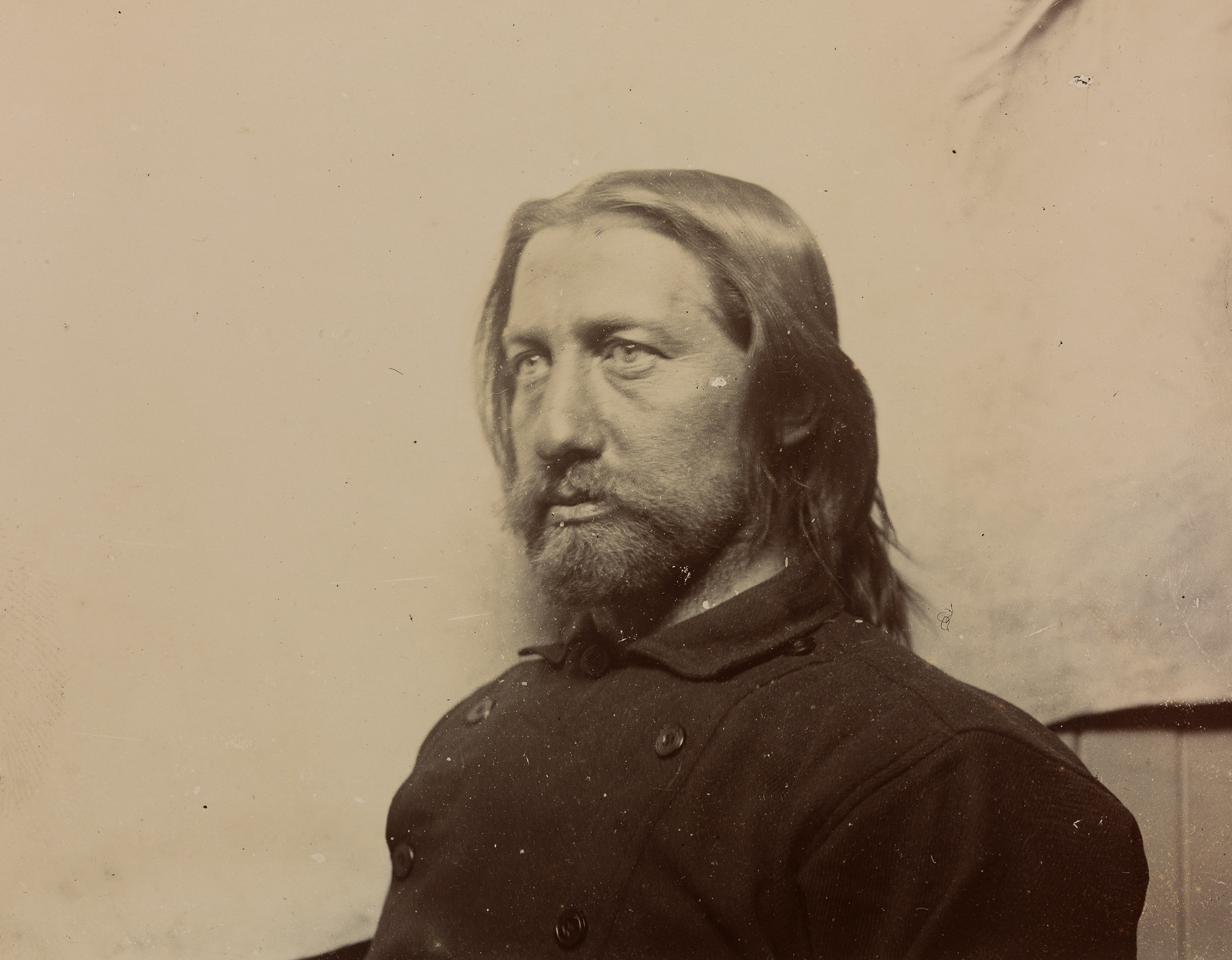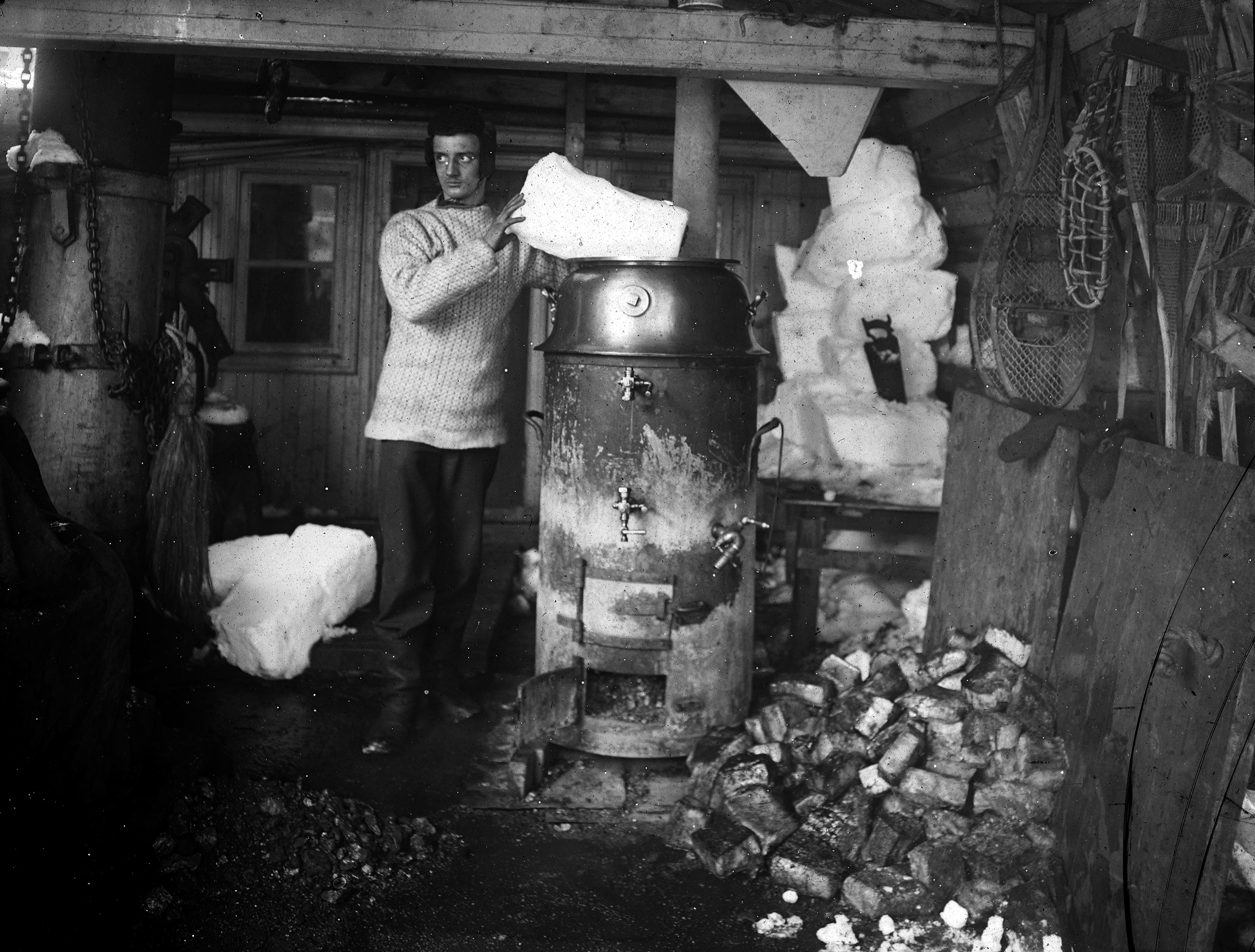
The American explorer Frederick Albert Cook is remembered today, if he’s remembered at all, for having likely lied about reaching the North Pole in 1908. Hailed as the Neil Armstrong of his day when he announced he’d seen the top of the world, he very quickly became the Lance Armstrong of his day after being pegged as a fraud.
But years earlier, as the surgeon on a grueling Antarctic expedition, the subject of my new book Madhouse at the End of the Earth, Cook was a legitimate hero. His groundbreaking interventions aboard the Belgica, a Belgian ship stuck fast in the pack ice for more than a year, saved many lives and prefigured established medical science by several decades.
On the morning July 11, 1898, Cook was awoken by a nightmarish sight. The captain, Georges Lecointe, had crawled to the doctor’s bedside. He had lost the use of his legs. It had been four months since the Belgica was imprisoned in a seemingly infinite expanse of ice, and two since the sun last dipped below the horizon. In that time, the men of the Belgica had seen their bodies and minds break down, gripped by a mysterious malaise that seemed as much physical and psychological. On top of that, scurvy was beginning to ravage the men. One officer had already died. It appeared that Lecointe would be next.
Cook could not be sure whether Lecointe’s paralysis indicated a terminal stage of scurvy or a hysterical reaction. Neither boded well.
“Men are not yet dead until the doctor closes the eyes,” Cook said, attempting to conceal his alarm. “If you come under my orders will you do exactly as told?”
“Yes,” said Lecointe. “I am at your mercy.”
Cook held out little hope for the captain’s recovery. None of the remedies in his medical chest would be of any use. Nevertheless, he issued strict orders. First, Lecointe was to abandon all liquid but water, and all food but fresh penguin and seal meat. Second, the captain was to stand unclothed in the glow of a blazing fire three times a day, which Cook referred to as the “baking treatment.”

Lecointe became a guinea pig for the Cook regimen. Within a week, the captain was back on his feet. Once word of his miraculous recovery spread, the rest of the men lined up to eat penguin and submit to the “baking treatment.” For all who were able to stomach them, penguin and seal steaks reversed the effects of scurvy. Many of those who stood naked before the fire reported that it eased their psychological distress. The baking treatment became the first known medical application of light therapy, routinely used today to treat seasonal affective disorder and related forms of depression.
Nothing in Cook’s medical education at Columbia and NYU suggested that these prescriptions would have any effect. Instead, they were inspired by Cook’s travels among the Inuit of Greenland, in the early 1890s. It struck him that the indigenous inhabitants of the Arctic didn’t suffer from scurvy despite having no access to fresh fruit or other known scurvy-fighting foods. Cook reasoned that there must be something in the Inuit diet, composed mostly of fresh game that warded off the dread disease.
It wouldn’t be until after the discovery of vitamin c, in the 1930s, that science could explain the so-called Inuit paradox. Scurvy is caused by a deficiency of the vitamin, also known as ascorbic acid. Without the molecular compound, collagen gradually breaks down and the body comes undone. Most animals—humans and upper primates being notable exceptions—can synthesize their own ascorbic acid. The oils in caribou, fish, walrus, seal, and other meats the Inuit ate contain enough vitamin c for humans to keep scurvy at bay, as long as they’re not overcooked. The same goes for penguin, on the other side of the earth.
The Inuit also inspired Cook’s baking treatment. At the darkest point of the long Antarctic night, as the men sunk into depression, the Belgica’s doctor recalled a conversation he’d had under the Northern lights with an Inuit elder named Sipsu. “There is light in all life,” Cook recalled Sipsu as saying. “Can you see the light stored in your body?” Though this notion that living creatures can “store” light doesn’t conform to any known Inuit belief—Sipsu may simply have been philosophizing with a new friend—Cook took it literally. He came to believe that “the presence of the sun is essential to animal as it is to vegetable life.” The condition of the Belgica’s men seemed to confirm this idea. Their weakness and pallor and mental atrophy and irregular heartbeats were in his mind akin to the etiolation of plants deprived of sunlight.
Cook resolved to do something about it. Since he couldn’t bring the Belgica to the light, he attempted to bring light to the Belgica.
In recent years, scientists studying the effect of light on brain function have confirmed some of Cook’s zanier intuitions. Dan Oren, a professor of psychiatry at Yale who credits Cook with pioneering light therapy, points to the quasi-identical molecular structures of the light-catching parts of chlorophyll and of hemoglobin. These photon traps differ only in one respect: in plants they are framed around a magnesium atom (which absorbs all but green light) whereas in mammals they are built around an iron atom (which absorbs all but red light).
Cook’s intuition about the mental benefits of light may have been correct, but the flames from the coal burning in the Belgica’s stove weren’t nearly as bright as the full-spectrum light typically used in modern phototherapy. It’s unclear whether the direct action of light could fully account for the success of Cook’s baking treatment. Other factors may have been just as important: Cook’s patients might have taken comfort in the warmth and dryness of the fire, for example, or simply in being taken care of.

Indeed, Cook considered it his utmost duty, he wrote, “to raise the patient’s hopes and instill a spirit of good humor.” Cook conducted regular psychological surveys of the men in his care and understood the importance of tending to the mind to treat the body. The apparent benefits of the baking treatment may have partly been due to a placebo effect. In which case, it was Cook’s magnetic personality and his ability to convince people—the very attributes that would later make him a convincing swindler and land him in federal prison—that saved the lives of the men of the Belgica.
Years later, when he tried to salvage his reputation and his fortune in the oil fields of Texas, Cook was convicted of swindling thousands of stockholders in a Ponzi scheme. He was sentenced to 14 years in Leavenworth penitentiary, where he quickly became one of the most popular inmates, beloved just as he had been aboard the Belgica. In issuing his sentence, the judge pronounced Cook the Machiavelli of the twentieth century. The New York Times was no kinder: “He will count for ever among the greatest impostors of the world.”
The polar expeditions of the heroic age serve as case studies for future manned missions to Mars—a destination as distant, hostile, and forbidding as Antarctica may have seemed in the 1890s. Jack Stuster, an anthropologist who has conducted numerous studies for NASA, says that the success of any such voyage would require finding a doctor who could make the best of the limited resources at his or her disposal, someone who could emulate Cook’s combination of ingenuity, empathy, and infectious optimism. “When I think of the physician role,” Stuster tells me, “I think of Frederick Cook.”
If humans do reach the red planet, we may in part have one of the greatest impostors of the world to thank.
More Must-Reads from TIME
- Donald Trump Is TIME's 2024 Person of the Year
- Why We Chose Trump as Person of the Year
- Is Intermittent Fasting Good or Bad for You?
- The 100 Must-Read Books of 2024
- The 20 Best Christmas TV Episodes
- Column: If Optimism Feels Ridiculous Now, Try Hope
- The Future of Climate Action Is Trade Policy
- Merle Bombardieri Is Helping People Make the Baby Decision
Contact us at letters@time.com